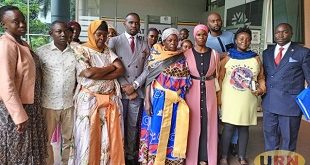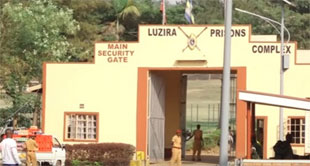
US$57 billion financing for sub-Saharan Africa promises to boost business
Doing business in Rwanda is expected to improve with the visit of World Bank’s President Jim Yong Kim.
Kim arrived in Kigali on March 21 for a two-day visit and held discussions with President Paul Kagame and the private sector in an effort to help the government improve the business climate and mobilise resources for economic growth and development.
On his departure to Rwanda and Tanzania, the World Bank boss said his aim was to see how these countries have achieved results as well as identify areas to learn as a Bank especially on innovations.
Over the past years, Rwanda has recorded fast growth in the economy with the help of information and communication technology and has taken decisive steps to reduce the cost of doing of business.
In the latest World Bank’s ease of doing business report 2017, Rwanda was ranked 56, up from 62 last year out of the 190 economies surveyed.
The improvement in performance was hinged on the improved online business registration and streamlined post-registration procedures, increased transparency of the land administration system as well as removal of mandatory pre-shipment inspection for imported products.
“In these uncertain times, the World Bank Group will accelerate our support as countries in Sub-Saharan Africa work to reform their economies, diversify, and restore growth,” Kim said.
“Leaders understand the need for the tough second- and third-generation reforms that will lead to structural transformation. They know they cannot wait for sequential reforms, but need to work in parallel on many different fronts.”
Kim’s visit to Rwanda follows the conclusion of G20 finance ministers and central bank governors meeting in Germany on March 18 in which the Bank announced US$57 billion in financing for sub-Saharan Africa over the next three fiscal years. In Africa, only South Africa is a G20 member.
The bulk of the financing, US$45 billion will come from the International Development Association (IDA), the World Bank’s fund for the poorest countries.
The package will also feature an estimated $8 billion in private sector investments from the International Finance Corporation (IFC), a private sector arm of the Bank, and $4 billion in financing from International Bank for Reconstruction and Development, its non-concessional public sector arm.
In December last year, development partners agreed to a record US$75 billion for IDA, a dramatic increase based on an innovative move to blend donor contributions to IDA with World Bank internal resources, and with funds raised through capital markets.
Nearly 60% of the IDA financing is expected to go to Sub-Saharan Africa, home to more than half of the countries eligible for IDA financing to invest in infrastructural development in partnership with the private sector.
The continent’s infrastructure needs are estimated at $93 billion, about 15 % of the region’s Gross Domestic Product.
World Bank said in statement that while much of the IDA financing will be dedicated to country-specific programs, significant amounts will be available through special “windows” to finance regional initiatives and transformative projects, support refugees and their host communities, and help countries in the aftermath of crises.
This will be complemented by a newly established Private Sector Window (PSW), especially in Africa where many sound investments go untapped due to lack of capital and perceived risks.
The Private Sector Window will supplement existing instruments of IFC and the Multilateral Investment Guarantee Agency (MIGA) , the World Bank’s arm that offers political risk insurance and credit enhancement to spur sound investments through de-risking, blended finance, and local currency lending.
The scaled-up IDA financing will build on a portfolio of 448 ongoing projects in Africa totaling about US$50 billion.
Of this, US$1.6 billion financing package is being developed to tackle the impending threat of famine in parts of Sub-Saharan Africa and other regions.
****
editor@independent.co.ug
 The Independent Uganda: You get the Truth we Pay the Price
The Independent Uganda: You get the Truth we Pay the Price


